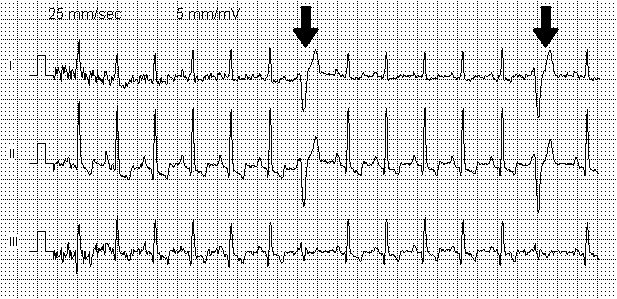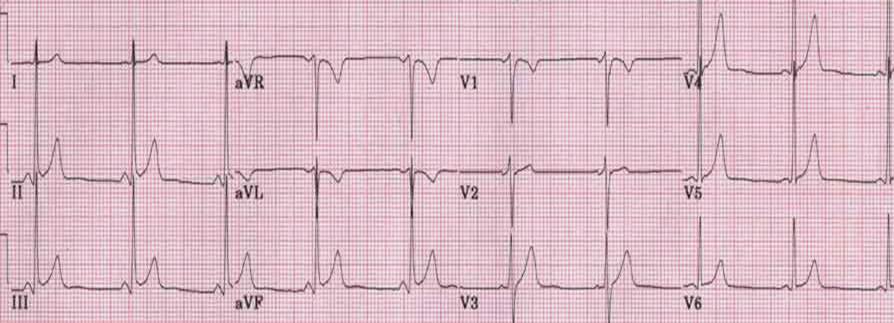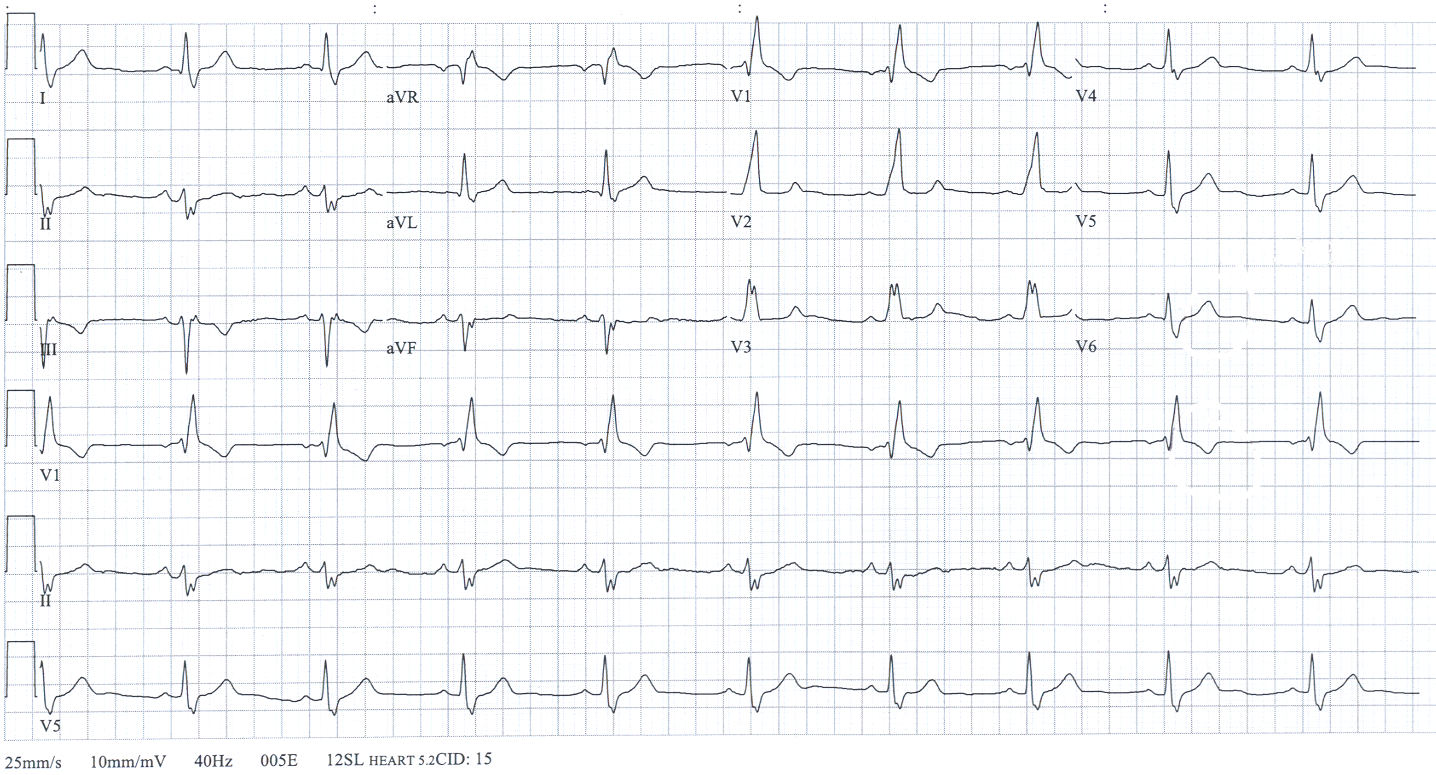Syncope resident survival guide: Difference between revisions
| Line 67: | Line 67: | ||
Shown below is an algorithm summarizing the diagnostic approach to [[syncope]] based on the 2009 ESC Guidelines for the Diagnosis and Management of Syncope.<ref name="pmid19713422">{{cite journal| author=Task Force for the Diagnosis and Management of Syncope. European Society of Cardiology (ESC). European Heart Rhythm Association (EHRA). Heart Failure Association (HFA). Heart Rhythm Society (HRS). Moya A et al.| title=Guidelines for the diagnosis and management of syncope (version 2009). | journal=Eur Heart J | year= 2009 | volume= 30 | issue= 21 | pages= 2631-71 | pmid=19713422 | doi=10.1093/eurheartj/ehp298 | pmc=PMC3295536 | url=http://www.ncbi.nlm.nih.gov/entrez/eutils/elink.fcgi?dbfrom=pubmed&tool=sumsearch.org/cite&retmode=ref&cmd=prlinks&id=19713422 }} </ref> | Shown below is an algorithm summarizing the diagnostic approach to [[syncope]] based on the 2009 ESC Guidelines for the Diagnosis and Management of Syncope.<ref name="pmid19713422">{{cite journal| author=Task Force for the Diagnosis and Management of Syncope. European Society of Cardiology (ESC). European Heart Rhythm Association (EHRA). Heart Failure Association (HFA). Heart Rhythm Society (HRS). Moya A et al.| title=Guidelines for the diagnosis and management of syncope (version 2009). | journal=Eur Heart J | year= 2009 | volume= 30 | issue= 21 | pages= 2631-71 | pmid=19713422 | doi=10.1093/eurheartj/ehp298 | pmc=PMC3295536 | url=http://www.ncbi.nlm.nih.gov/entrez/eutils/elink.fcgi?dbfrom=pubmed&tool=sumsearch.org/cite&retmode=ref&cmd=prlinks&id=19713422 }} </ref> | ||
<span style="font-size:85%"> '''Abbreviations:''' '''TIA:''' Transient ischemic attack; '''EEG:''' Electroencephalography; '''HF:''' Heart failure; '''AF:''' Atrial fibrillation; '''SVT:''' Supraventricular tachycardia; '''VT:''' Ventricular tachycardia; '''MI:''' Myocardial infarction; '''BBB:''' Bundle branch block </span> | <span style="font-size:85%"> '''Abbreviations:''' '''TIA:''' Transient ischemic attack; '''EEG:''' Electroencephalography; '''HF:''' Heart failure; '''AF:''' Atrial fibrillation; '''SVT:''' Supraventricular tachycardia; '''VT:''' Ventricular tachycardia; '''MI:''' Myocardial infarction; '''BBB:''' Bundle branch block; '''SCD:''' Sudden cardiac death; '''CAD:''' Coronary artery disease; '''ARVC:''' Arrhythmogenic right ventricular cardiomyopathy.</span> | ||
| Line 206: | Line 206: | ||
: ❑ Syncope during exertion or supine | : ❑ Syncope during exertion or supine | ||
: ❑ Palpitations at the time of syncope | : ❑ Palpitations at the time of syncope | ||
: ❑ Family history of[[SCD]] | : ❑ Family history of [[SCD]] | ||
: ❑ Non-sustained [[VT]] | : ❑ Non-sustained [[VT]] | ||
: ❑ Conduction abnormalities with QRS >120 ms | : ❑ Conduction abnormalities with QRS >120 ms | ||
| Line 230: | Line 230: | ||
{{familytree | | | | | | | | | | | | | | H01 | | | | | H01= Tilt testing}} | {{familytree | | | | | | | | | | | | | | H01 | | | | | H01= Tilt testing}} | ||
{{familytree/end}} | {{familytree/end}} | ||
===Diagnostic Algorithm in Patients with Confirmed Syncope=== | ===Diagnostic Algorithm in Patients with Confirmed Syncope=== | ||
Revision as of 16:24, 21 March 2014
Editor-In-Chief: C. Michael Gibson, M.S., M.D. [1]; Associate Editor(s)-in-Chief: Karol Gema Hernandez, M.D. [2]; Alejandro Lemor, M.D. [3]
| Syncope Resident Survival Guide Microchapters |
|---|
| Overview |
| Causes |
| Classification |
| Diagnosis |
| Treatment |
| Do's |
| Don'ts |
Overview
Syncope is the transient loss of consciousness (LOC) due to cerebral hypoperfusion and it is characterized by a rapid onset, a short duration and a spontaneous complete recovery. It is important to identify the cause of the syncope and recognize high risk patients (those with structural heart disease or abnormal EKG). The initial management depends on the etiology of the syncope (reflex, orthostatic hypotension or cardiovascular).
Causes
Life Threatening Causes
Life-threatening causes include conditions which may result in death or permanent disability within 24 hours if left untreated.
Common Causes
- Aortic stenosis
- Arrhythmia
- Medications (vasodilators, diuretics, antiarrhythmics, antipsychotics)
- Orthostatic hypotension
- Vagal stimulation
- Vertebrobasilar insufficiency[2]
Classification
Syncope is classified based on the pathophysiology of the etiology.[3]
Cardiovascular syncope
❑ Arrhythmias (bradycardia or tachycardia)
❑ Structural heart disease
❑ Drug-induced arrhythmyas
Orthostatic hypotension
❑ Primary autonomic failure (pure autonomic failure, Parkinson's disease)
❑ Secondary autonomic failure (diabetes, uremia)
❑ Drug-induced (alcohol, vasodilators, diuretics)
❑ Hypovolemia (hemorrhage, diarrhea)
Reflex syncope
❑ Vasovagal
❑ Situational (cough, sneeze, postprandial, post-exercise)
❑ Carotid sinus syncope
Diagnosis
Diagnostic Algorithm in Patients with Suspected Syncope
Shown below is an algorithm summarizing the diagnostic approach to syncope based on the 2009 ESC Guidelines for the Diagnosis and Management of Syncope.[3]
Abbreviations: TIA: Transient ischemic attack; EEG: Electroencephalography; HF: Heart failure; AF: Atrial fibrillation; SVT: Supraventricular tachycardia; VT: Ventricular tachycardia; MI: Myocardial infarction; BBB: Bundle branch block; SCD: Sudden cardiac death; CAD: Coronary artery disease; ARVC: Arrhythmogenic right ventricular cardiomyopathy.
Characterize symptoms ❑ Loss of consciousness (LOC)
❑ Prodrome:
❑ Chest pain (suggestive of cardiovascular syncope)
❑ Activity prior to LOC:
❑ Bowel or bladder incontinence (suggestive of reflex syncope) Inquire about medications intake: Obtain a detailed past medical history:
❑ Neurological diseases: ❑ Recent trauma | |||||||||||||||||||||||||||||||||||||||||||||||
Identify possible triggers: Suggestive of reflex syncope Suggestive of cardiovascular or orthostatic hypotension | |||||||||||||||||||||||||||||||||||||||||||||||
Examine the patient
❑ Vitals
❑ Lungs ❑ Heart
❑ Neurologic
| |||||||||||||||||||||||||||||||||||||||||||||||
Order labs and tests ❑ EKG (most important initial test) ❑ Glucose (rule out hypoglycemia)
| |||||||||||||||||||||||||||||||||||||||||||||||
| Confirm diagnosis of syncope ❑ Short duration ❑ Rapid onset ❑ Complete spontaneous recovery Must have this 3 characteristics | |||||||||||||||||||||||||||||||||||||||||||||||
| Syncope | Non-syncopal LOC | ||||||||||||||||||||||||||||||||||||||||||||||
| Certain etiology: ❑ Cardiovascular ❑ Orthostatic hypotension ❑ Reflex | Uncertain etiology | ❑ Confirm with specific test: OR ❑ Consult with specialist | |||||||||||||||||||||||||||||||||||||||||||||
| Risk stratification | |||||||||||||||||||||||||||||||||||||||||||||||
| Determine if there are any high risk criteria: ❑ Severe structural or CAD ❑ Clinical or ECG features suggesting arrhythmic syncope:
❑ Important comorbidities:
| |||||||||||||||||||||||||||||||||||||||||||||||
| ❑ If yes: High risk | ❑ If no: Low risk | ||||||||||||||||||||||||||||||||||||||||||||||
| Immediate in-hospital monitoring: In bed or telemetry | |||||||||||||||||||||||||||||||||||||||||||||||
| Low risk, recurrent syncopes: ❑ Cardiac or neurally mediated tests as appropriate: -Holter if >1 episode/week -ELR if interval between episodes <4 weeks Delayed treatment guided by ECK documentation | Low risk, single syncope | ||||||||||||||||||||||||||||||||||||||||||||||
| ❑ If suspicion of structural heart disease: Echocardiography | Was it in high risk setting? | ||||||||||||||||||||||||||||||||||||||||||||||
| If yes: Treat as according | No structural heart disease | Yes | No: No further evaluation | ||||||||||||||||||||||||||||||||||||||||||||
| Tilt testing | |||||||||||||||||||||||||||||||||||||||||||||||
Diagnostic Algorithm in Patients with Confirmed Syncope
| Determine the etiology | |||||||||||||||||||||||||||||||
Cardiovascular syncope
❑ Presence of definitive structural hearth disease
❑ Family history of unexplained sudden death Abnormal EKG findings
| Orthostatic hypotension
❑ After standing up or prolonged standing ❑ Start of new antihypertensive drug or dosage change ❑ Presence of autonomic neuropathy ❑ Prolonged standing ❑ Associated with crowd or hot spaces | ||||||||||||||||||||||||||||||
Treatment
Shown below is an algorithm summarizing the therapeutic approach to syncope based on the 2009 ESC Guidelines for the Diagnosis and Management of Syncope. [3]
Abbreviations: AF: Atrial fibrillation; SVT: Supraventricular tachycardia; VT: Ventricular tachycardia; MI: Myocardial infarction; BBB: Bundle branch block.
| ❑ Determine the etiology of the syncope | |||||||||||||||||||||||||||
Cardiovascular | Reflex | ||||||||||||||||||||||||||
Depends on the cause of the arrhythmia: ❑ Schedule for cardiac pacing surgery in patients with sinus node disease, Mobitz II AV block, BBB with positive electrophysiological study ❑ Schedule for catheter ablation in patients with SVT and VT in absence of structural hearth disease ❑ Administer antiarrhythmic drug therapy in patients with AF, failed catheter ablation ❑ Schedule for implantable cardioverter defibrillator surgery in patients with VT with heart disease, electrophysiological study induced VT in patients with previous MI, VT and inherited cardiomyopathy | ❑ Adequate hydration and salt intake ❑ Adjunctive therapy if needed:
Contraindicated in severe heart disease, acute renal failure, pheochromocytoma, severe hypertension or thyrotoxicosis
| ❑ Explain diagnosis, provide reassurance ❑ Explain risk of recurrence and avoidance of triggers ❑ Isometric physical counterpressure maneuvers (PCM) in patients with prodrome:
| |||||||||||||||||||||||||
Do's
- Tilt testing is indicated to demonstrate susceptibility to reflex syncope.
- Tilt testing should be considered to discriminate between reflex and OH syncope.
- Perform tilt testing if the cause of syncope is a psychiatric disease.
- Tilt testing may be considered for differentiating syncope with jerking movements from epilepsy.
- If syncope happened after standing up position, there should be documentation with active standing or tilt testing in order to diagnose orthostatic hypotension.
- Perform carotid sinus massage if patient >40 years with syncope of unknown etiology after initial evaluation.
- If multiple unexplained falls; perform tilt testing.
- Consider implantable loop recorder before embarking on cardiac pacing in patients with suspected or confirmed reflex syncope presenting with frequent or traumatic syncopal episodes.
- Evaluate neurologically if syncope is due to autonomic failure, to evaluate underlying disease.
Don'ts
- Don't perform carotid sinus massage in patients with previous TIA or stroke within the past 3 months and in patients with carotid sinus bruits (except if carotid sinus Doppler studies excluded significant stenosis).
- Don't use tilt testing for assessment of treatment.
- Don't perform isoproterenol tilt test in patients with ischemic heart disease.
- Don't use adenosine stress test as a diagnostic test to select patients for cardiac pacing, owing to lack of correlation with spontaneous syncope.
- Don't perform electrophysiologic study if there is already indication for implantable cardioverter defibrillator in patients with ischemic heart with suspected arrhythmic cause.
- Don't perform electrophysiologic study in patients with normal EKG, no heart disease, and no palpitations.
References
- ↑ Khoo, C.; Chakrabarti, S.; Arbour, L.; Krahn, AD. (2013). "Recognizing life-threatening causes of syncope". Cardiol Clin. 31 (1): 51–66. doi:10.1016/j.ccl.2012.10.005. PMID 23217687. Unknown parameter
|month=ignored (help) - ↑ Kapoor, WN. (2000). "Syncope". N Engl J Med. 343 (25): 1856–62. doi:10.1056/NEJM200012213432507. PMID 11117979. Unknown parameter
|month=ignored (help) - ↑ 3.0 3.1 3.2 Task Force for the Diagnosis and Management of Syncope. European Society of Cardiology (ESC). European Heart Rhythm Association (EHRA). Heart Failure Association (HFA). Heart Rhythm Society (HRS). Moya A; et al. (2009). "Guidelines for the diagnosis and management of syncope (version 2009)". Eur Heart J. 30 (21): 2631–71. doi:10.1093/eurheartj/ehp298. PMC 3295536. PMID 19713422 Check
|pmid=value (help).




